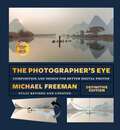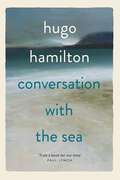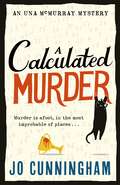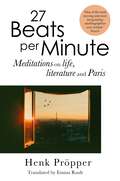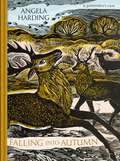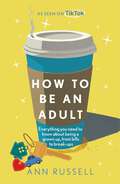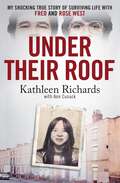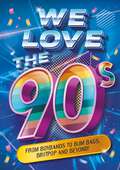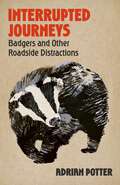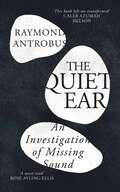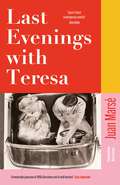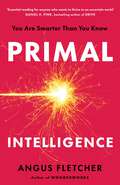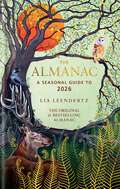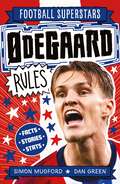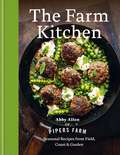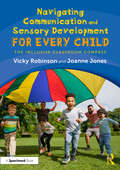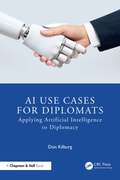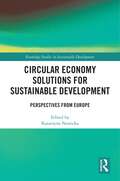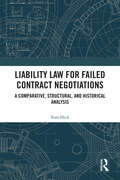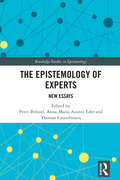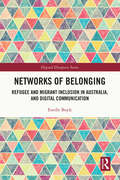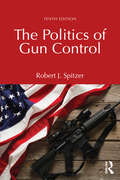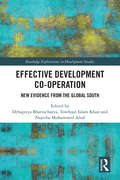- Table View
- List View
The Photographer's Eye (Definitive Edition): Composition and Design for Better Photos
by Michael FreemanFULLY REVISED AND UPDATED EDITION OF THE PHOTOGRAPHER'S EYE FROM AWARD-WINNING AUTHOR MICHAEL FREEMAN - COMING JULY 2025With 30% new content and never-before-seen images, Michael Freeman brings his ground-breaking book, The Photographer's Eye, up to date with a fresh look and the latest developments in digital photography.Design is the single most important factor in creating a successful photograph. The ability to see the potential for a strong picture and then organise the graphic elements into an effective, compelling composition has always been one of the key skills in making photographs. Taking a brand-new look at composition, Michael Freeman explores the visual mechanics of photography in its own native terms. Freshly illustrated with straight-to-the-point diagrams and graphic deconstructions, this new remastered edition speaks in that intuitive, visual, and instantaneous language in which photographers think and work.Dive into extraordinary photography and graphic illustrations that explore how each compositional element is placed and arranged in relation to one another. Examine the outtakes from each shoot to understand why one particular image succeeded compared to those taken before and after. Track the viewer's eye as it moves throughout the photo to see the optical dynamics held within each frame. Most importantly, internalise this graphic language so you can instantly recognise amazing and powerful shots as they appear in your own viewfinder.
Conversation with the Sea
by Hugo Hamilton'Truly a book for our time' PAUL LYNCHFROM THE AWARD-WINNING AUTHOR OF THE SPECKLED PEOPLEFleeing his failed marriage in Berlin, Lukas Dorn revisits the West of Ireland, the place of his honeymoon two decades earlier. While his former wife is being cancelled at work and his daughter is arrested at a street protest, he tries to make sense of his broken life with a journal as his sole companion.His inherited memory of the Nazi Holocaust comes face to face with the present when he meets a refugee from a recent warzone. As Lukas communes with the elements in this wild coastal place, he is forced into a confrontation with the past that will carry him to the edge of existence.Conversation with the Sea speaks with heart-rending tenderness to the present moment, as it explores truth, illusion and the deadly silencing of war in a captivating tale of love in a time of displacement.'Told with Hamilton's signature purity of tone, an epic story about how love and history intersect.' ANNE ENRIGHT'I don't think I've ever read a book as wise, or as moving. I will treasure it forever.' DONAL RYAN'Hypnotic, passionate, urgent ... Hamilton cuts a clean line to the truth of our mindless moment.' PAUL LYNCH
A Calculated Murder: A charming cosy murder mystery (Una McMurray Mysteries Book 2) (Una McMurray)
by Jo CunninghamUna McMurray is puzzled. Surely, statistically, the international cat show scene shouldn't be this... lethal?Keen to make her mark in her new job in pet insurance, Una's first task is to calculate whether cat ownership extends human lifespan. Tragically, that's not the case for prizewinning cat owner Jeff Bridgely - a most improbable accident has ended his dreams of triumphing at the upcoming International Cat Show. When a second competitor dies in mysterious circumstances, the maths just doesn't add up. Una vows to resolve this suspicious data discrepancy and impress her new project team, especially condescending Tim and ambitious trainee Patti.After borrowing Pedro the cat and brushing up on her feline facts, Una dives deep undercover in the cutthroat world of cat shows. Competition is fierce, but what Pedro lacks in pedigree, he makes up for in character. Although as Pedro's odds of winning shorten, so do Una's chances of survival... Armed with razor-sharp logic, analytical expertise and a scruffy moggy sidekick, can actuary Una catch the cat show killer before she becomes the latest fatal statistic?----------Readers love the Una McMurray Mysteries series!'Clever and very funny' - Ian Moore, author of Death and Croissants'Eleanor Oliphant meets The Thursday Murder Club' - Jessica Irena Smith'Deliciously fun mystery that gest serious about the body count, with clues that really do add up! Loved following Una seeing the risks at every turn - and having to overcome them if she's to save those she loves. #TeamPedro - Sarah Yarwood-Lovett, author of the Dr Nell Ward Mysteries series'Witty and fun' - Woman's Own'Terrifically funny and endearing' - Belfast Telegraph'Impressive... full of unusual ideas and amusing relationships' - Morning Star
27 Beats Per Minute: Meditations on Life, Literature and Paris
by Henk Pröpper'A very special book that I enjoyed enormously' Cees NooteboomA dazzling ode to life, literature and Paris, the French capital that even in emptiness and desolation will always be magnificent.Soon after Henk Pröpper moves from Amsterdam to Paris, both the world and his heart almost come to a full stop. He undergoes major surgery and awakes in an empty city in lockdown. Paris is transformed into an abandoned stage. To quicken his recovery, Pröpper begins walking. He combs his immediate surroundings, he hunts for the past, discovering countless commemorative plaques and monuments that honour well- and lesser-known Parisians and keep their histories alive. Pröpper also reflects on his own life and the literature that has shaped him. In this way, he walks in the footsteps of literary heroes such as Victor Hugo, of Balzac and of Camus.'One of the most moving and most invigorating autobiographies ever written. This is a finely polished gem worthy of admiration' Knack'A concise masterpiece that summarises a life in the time of the pandemic in the personal, euphoric and precarious shades of one year. Without one's realising, it covers just about everything: thoughts, emotions, literature, films, loves, feelings, memories, annoyances and doubts' Vrij Nederland'Philosophical, reflective, and with the pleasantly slow heartbeat of a writer who carries the reader through the city, European literature and history' het ParoolTranslated by Emma Rault.Epilogue translated by Sherry Macdonald.
Falling into Autumn: part of a beautiful new series from beloved illustrator and print-maker Angela Harding
by Angela Harding'My encounters with nature are very personal. I am inspired by watching jays gathering acorns, owls hooting and the joy of hearing nightingales.''In the shady parts of my garden, ferns grow. In the springtime, the ferns unfurl their tight, rounded, bundled leaves into rich green fingers. By the autumn, these same leaves are starting to go brown at the edges. This seems to be at the same time that the swallows gather to leave. Groups of swallows sit in great flocks on the electric wires that are behind my studio. Together with the ferns, they are markers that the summer has gone; that one season has finished and another is about to begin.'Falling Into Autumn is the third book in a stunning seasonal quartet from beloved printmaker and illustrator Angela Harding. Each title in this pocket-sized series takes readers on a journey through the seasons, reflecting Angela's observations as the nature around her transforms and evolves over the course of a year. Taking in landscapes across the UK including views from her home studio in Rutland, to the Scottish wilderness, via the low-lying marshlands of Suffolk and the windswept hills of Yorkshire, the beautiful illustrations and evocative imagery of the prose make this the perfect book for nature lovers and art lovers everywhere.Featuring over thirty of Angela Harding's favourite prints alongside observations taken from her books A Year Unfolding, Wild Light and Still Waters & Wild Waves, each short, small book in this seasonal collection is a beautiful new way to enjoy Angela's work and celebrate nature and wildlife across the UK at all times of year.Collect all four titles: Spring Unfurled, Summer's Hum, Falling into Autumn, Winter's Song.
How to be an Adult: Everything you need to know about being a grown up, from bills to break-ups
by Ann Russell'Ann Russell has all the answers' Sunday Times'An agony aunt to an audience of millions' BBCFrom the much-loved 'Auntie' of TikTok, and author of How to Clean Everything and How to Save Money, How to Be an Adult is a practical guide to life - full of the things you should have been taught in school, but probably weren't.This book takes you through everything from the everyday to the unexpected, the practical to the personal. Whether you're learning how to budget, rent a flat, deal with a break-up, or cope with grief - or even just figuring out how to change a plug - Ann Russell is here to help.Written with warmth and years of experience, no one should leave home for the first time without this book.
Under Their Roof: My shocking true story of surviving serial killers Fred and Rose West
by Kathleen Richards Ann CusackKathleen Richards was just 17 when she and her sister Deirdre found themselves on the doorstep of 25 Cromwell Street, Gloucester, seeking lodgings from a seemingly friendly local couple: Fred and Rose West.While growing up in poverty-stricken Dublin in the 1960s, Kathleen was abused from a young age. A move to England allowed her to escape, but even so life remained difficult, forcing her to seek refuge.At first, Cromwell Street provided freedom for the sisters who were entertained by Fred's quirky behaviour. Kathleen was also happy to make a new friend in her fellow lodger, Shirley Robinson.But then, things took a sinister turn: Fred began to abuse Kathleen with his wife's encouragement. And, when Shirley suddenly disappeared too, Kathleen's world began to grow very dark... This is a chilling account of what it's like to come face-to-face with Britain's most notorious serial killers, but it is also an inspiring account of the resilience of women and how to find happiness after trauma.
We Love the 90s!
by Emily SteadDiscover everything you need to know about your favourite decade - the 1990s!From bum bags, boybands and Britpop via grunge, girl bands and Home Alone, this book will make you the greatest 90s expert ever.With an ultimate 1990s quiz at the end of the book.Full colour photography throughout.
Interrupted Journeys: Badgers and Other Roadside Distractions
by Adrian PotterWhen Adrian Potter retires from a life of teaching in West Yorkshire, his interests turn to a local badger group. He takes over the 'Badger Phone', which he comes to realise is something of a hot potato. He is inundated with calls: reports of sightings, requests for advice about feeding, complaints about badgers digging up lawns. Adrian, reborn as the 'Badger Man', travels West Yorkshire with two other enthusiasts in tow: Pam, and Derek, a retired miner with ruined teeth. However, it doesn't stop with badgers. Adrian soon finds himself taking on fox and deer incidents, because no network of care exists for these other larger mammals. Interrupted Journeys is an unconventional memoir about one man's experiences with animals that lead hidden lives, and the consequences when they collide with our world. It movingly describes the author nursing wounded badger cubs, rescuing injured roe deer, liberating trapped foxes, as well as encounters with a host of other animals. And it thrillingly reveals a man who finds a second childhood in later life through contact with nature.
The Quiet Ear: An Investigation of Missing Sound
by Raymond AntrobusA groundbreaking exploration of deafness by the award-winning poet Raymond Antrobus.**PRE-ORDER NOW**A memoir. A cultural history. A call to action.'This book left me transformed' CALEB AZUMAH NELSON'A tender triumph' EMMA WARREN'Read this book' LEMN SISSAY'Destined to become a modern classic' ROGER ROBINSON'Changed how I will move through the world' CLINT SMITHRaymond Antrobus was first diagnosed as deaf at the age of six. He discovered he had missing sounds - bird calls, whistles, kettles, alarms. Teachers thought he was slow and disruptive, some didn't believe he was deaf at all.The Quiet Ear tells the story of Raymond's upbringing at the intersection of race and disability. Growing up in East London to an English mother and Jamaican father, educated in both mainstream and deaf schooling systems, Raymond explores the shame of miscommunication and the joy of finding community, and shines a light on the decline of deaf education in Britain.Throughout, Raymond sets his story alongside those of other D/deaf cultural figures, from painters to silent film stars, poets to performers - the inspiring models of D/deaf creativity he did not have growing up.The Quiet Ear is a groundbreaking and much-needed examination of deafness. A memoir, a cultural history, a call to action.'Brilliant' SEÁN HEWITT'A marvel' ILYA KAMINSKY'Expansive, generous and massively tender' HANIF ABDURRAQIB'Powerful and important' ANDREW LELAND'Lyrical, moving and powerful' ALICE WONG
Last Evenings with Teresa: 'Spain's finest contemporary novelist' Guardian
by Juan Marsé'Spain's finest contemporary novelist' Guardian'Juan Marsé's contribution to European fiction has been consistently remarkable' Times Literary SupplementFrom one of Spain's most acclaimed authors, comes an extraordinary novel about ambition and longing set against the backdrop of post-war Barcelona.Teresa is everything he wants. She is beautiful, charming, rebellious, and born with every advantage in life. He has only ever existed on the margins. A poor immigrant from Murcia, earning his living stealing and selling motorbikes, he could only ever dream of being with the daughter of the Catalan bourgeoisie. When their desires take hold, they must face the realities of a world designed to keep them apart.With Last Evenings with Teresa, Marsé has created a portrait of two unforgettable literary heroes whose love affair captures all the tensions, passions and contradictions of a generation living in the shadow of a civil war but who, despite the odds, continue to dream.'Last Evenings with Teresa ... has everything one can ask of a novel; it seems to have been written in a state of grace' Javier Cercas'Between illusions and realities, with his own free creative will - the opposite of the recipe for a social novel - Juan Marsé offered a memorable panorama of 1950s Barcelona and its wild heroism' Lluís Izquierdo 'I consider Juan Marsé the best storyteller Spanish literature has given us in many decades' Ignacio Echevarría 'He has never written a single page where something interesting isn't happening' Eduardo Mendoza'One of Spain's most acclaimed writers' New York Times
Primal Intelligence: You Are Smarter Than You Know
by Angus Fletcher'A fascinating exploration of human potential that will change how you think about thinking . . . Essential reading for anyone who wants to thrive in an uncertain world' DANIEL H PINKTap into your hidden intelligence and transform your lifeHow are some people so much smarter than the rest of us? In 2021, researchers at Ohio State's Project Narrative, renowned for collaborations with NASA, Hollywood and Silicon Valley, announced they had the answer. They named it Primal Intelligence. Intrigued, U.S. Army Special Operations developed Primal training for its most classified units. The training succeeded. The Operators saw the future faster. They healed quicker from trauma. In life-and-death situations, they chose wiser. The Army then authorized trials on civilian entrepreneurs, doctors, engineers, managers, salesforces, coaches, teachers, investors and NFL players. Their leadership and innovation improved significantly. They coped better with change and uncertainty. They experienced less anger and anxiety. Finally, the Army provided Primal training to college and K-12 classrooms. It produced substantial effects in students as young as eight. That revolutionary training is now available for the first time in this book. It is not an optimization hack or a cheat code. Primal Intelligence is a different way of using your brain. It offers a new neuroscientific approach to intuition, imagination, emotion and commonsense. It is your edge over AI. Your human genius. Your Primal Intelligence.
The Almanac: A Seasonal Guide to 2026 (Almanac)
by Lia LeendertzThe original and bestselling almanacReconnect with the seasons in Britain and Ireland with this month-by-month guide to the world around us - including tide tables, sunrises and moon phases; wildlife and folklore; seasonal recipes and more.The Almanac: A Seasonal Guide to 2026 gives you the tools and inspiration you need to celebrate, mark and appreciate each month of the year in your own particular way.Divided into the 12 months, a set of tables each month gives it the feel and weight of a traditional almanac, providing practical information that gives access to the outdoors and the seasons, perfect for expeditions, woodland foraging and beach holidays. And it's the ideal gift!You will find yourself referring to The Almanac all year long, revisiting it again and again, and looking forward to the next edition as the year draws to a close.PRAISE FOR THE ALMANAC:'Lia Leendertz's classic almanac never fails to delight' - The Herald'It's a perfect Christmas present' - Allan Jenkins, The Observer'The perfect companion to the seasons' - India Knight'Indispensable' - Sir Bob Geldof'This book is your bible' - The Independent'I love this gem of a book' - Cerys Matthew
Ødegaard Rules (Football Superstars #32)
by Simon MugfordIs Martin Ødegaard your ultimate footballing hero? The magician in midfield has become Arsenal's talisman since being handed the captain's armband in 2023. The son of a former footballer, discover how by the age of 15, Ødegaard was playing in the UEFA Champions League and even represented Norway in a friendly against the UAE, making history as Norway's youngest ever national team player. Filled with lots of facts and stats, the inspiring narrative features fun cartoons, a simple narrative style and a cast of characters chipping in with quotes, jokes and comments.
How to be an Adult: Everything you need to know about being a grown up, from bills to break-ups
by Ann Russell'Ann Russell has all the answers' Sunday Times'An agony aunt to an audience of millions' BBCFrom the much-loved 'Auntie' of TikTok, and author of How to Clean Everything and How to Save Money, How to Be an Adult is a practical guide to life - full of the things you should have been taught in school, but probably weren't.This book takes you through everything from the everyday to the unexpected, the practical to the personal. Whether you're learning how to budget, rent a flat, deal with a break-up, or cope with grief - or even just figuring out how to change a plug - Ann Russell is here to help.Written with warmth and years of experience, no one should leave home for the first time without this book.
The Farm Kitchen: Seasonal Recipes from Field, Coast and Garden
by Abby AllenTaking inspiration from the field, farm, garden and the coast, Abby Allen offers seasonal, sustainable, carefully crafted, wholesome and uncomplicated recipes that celebrate simple, honest ingredients. Chapters are organised by season and include broad bean, pea and sheep's cheese toasts to minted hogget meatballs with peas and goats curd, and New England-style lobster rolls. Filled with common sense, timeless values around the food we grow and eat, each chapter also includes feature essays on key considerations around food and farming in the UK at present, from growing your own to regenerative farming, the seasonality of sheep and food diversity.
Navigating Communication and Sensory Development for Every Child: The Inclusive Classroom Compass
by Vicky Robinson Joanne JonesDrawing on the authors’ combined expertise in both occupational and speech and language therapy, this essential guide is designed to empower teaching staff in their mission to create inclusive learning environments that support every child.The book offers an accessible exploration of the connection between sensory processing and speech and language difficulties. Illustrated by real-life examples and helpful reflection opportunities, each chapter includes practical strategies and evidence-based interventions to equip the reader with the tools needed to navigate complex challenges with confidence and compassion. With clear guidance on designing inclusive classroom environments, which promote sensory regulation, foster speech and language development, and cultivate collaboration with professionals and families, this book serves as a trusted compass for educators.Navigating Communication and Sensory Development for Every Child provides a roadmap for creating a welcoming and supportive classroom where every child can thrive. It is valuable reading for early years educators, classroom teachers, teaching assistants, SENCOs, and other allied professionals working in both specialist and mainstream settings.
AI Use Cases for Diplomats: Applying Artificial Intelligence to Diplomacy (Chapman & Hall/CRC Artificial Intelligence and Robotics Series)
by Donald KilburgIn today’s rapidly changing world, diplomacy is undergoing a revolutionary transformation. Imagine ambassadors using artificial intelligence (AI) to analyze millions of social media posts in real time, crisis responses guided by predictive analytics, and complex negotiations enhanced by unprecedented data‑driven insights. This isn’t the future—it’s diplomacy today, reimagined through AI. Drawing on over 21 years of experience integrating technology into foreign affairs, Donald Kilburg, a retired U.S. diplomat, reveals how AI is revolutionizing diplomatic engagement, crisis management, and public diplomacy. From enhancing communication strategies to optimizing consular services, each chapter presents a vivid exploration of AI’s potential to amplify the effectiveness of diplomatic missions across the globe. Readers will discover practical strategies for implementing AI in diplomatic operations, gain insights into the future of AI‑driven global governance, and learn when—crucially—not to use AI at all. Through vivid case studies and real‑world examples, this book illuminates both the opportunities and ethical complexities at the intersection of technology and international relations. Whether you’re a diplomatic practitioner, a student of international affairs, or fascinated by technology’s impact on global relationships, this groundbreaking guide charts the course for diplomacy’s next evolution—where human wisdom and AI converge to address our world’s most pressing challenges.
Circular Economy Solutions for Sustainable Development: Perspectives from Europe (Routledge Studies in Sustainable Development)
by Katarzyna NowickaThis edited collection offers fresh perspectives on sustainable development and social impact using a circular economy framework. Against the backdrop of escalating environmental challenges such as resource depletion and climate change, transitioning from a linear to a circular economy is a key step towards meeting the UN’s Sustainable Development Goals.Circular supply chains are pivotal in this transformation, focusing on resource efficiency, recycling, and waste reduction, with consumer roles also playing a key part. Building on theoretical foundations, the chapters in this book use quantitative and qualitative research to explore practical solutions and transformative potential across industries and urban settings, addressing global economic, environmental and social challenges. This book fosters a deeper understanding of circular economy principles and inspires actionable changes, with consumers becoming active participants in the circular economy. By focusing on consumer knowledge, eco‑innovation, and urban readiness, it provides a systemic, holistic approach to circular economy studies.This book will be of interest to researchers, academics, and students interested in enhancing their understanding of circular economy principles and practices, including those in environmental science, sustainable development, economics, and business.
Liability Law for Failed Contract Negotiations: A Comparative, Structural, and Historical Analysis
by Tom HickThis book provides the European structure of liability for failed contract negotiations through a comparative lens, with wider lessons for an international context.The book demonstrates that all the analyzed legal systems, in Belgium, France, Germany, Italy, and the Netherlands, can be best understood through a binary structure in their approach to pre-contractual liability, or culpa in contrahendo. This structure consists of two key elements: first, a general liability framework that allows for compensation of pure economic loss based on certain qualified conduct, such as negligence; and second, an implicit obligation to contract, which, though not explicitly recognized, is presumed in most systems. The book argues that this dual framework provides valuable insights into ongoing scholarly debates and the challenges practitioners face in cases of failed contract negotiations. Drawing on these insights, it proposes a more effective approach to the obligation to contract: one that encourages parties to collaborate in reaching an agreement voluntarily rather than imposing one upon them.This book will be of interest to researchers in the field of comparative contract and tort law, European private law, and private law theory.
The Epistemology of Experts: New Essays (Routledge Studies in Epistemology)
by Thomas Grundmann Peter Brössel Anna-Maria Asunta EderThis volume presents new research on the epistemology of experts. It features original essays from leading epistemologists on this timely topic.Modern societies benefit significantly from a certain kind of epistemic division of labor: they outsource much of their epistemic work to well-trained cognitive experts. However, due to their degree of specialization, cognitive sophistication, and highly privileged status, cognitive experts tend to become alienated from laypeople. This leads to what one may call the paradox of experts: as experts become more competent, specialized, and sophisticated, the harder it will be for laypeople to identify and trust experts. The chapters in this volume explore the epistemology of expert judgment across several core themes and crucial questions: Analysis of Experts: What does it take to be a cognitive expert? Epistemic Authority: How much should we concede experts over laypeople? The Social Roles of Experts: What role do experts play in society, and what role should they play? Challenges: What problems arise from experts’ epistemic authority and societal role? The Epistemology of Experts is an essential resource for scholars and advanced students working in epistemology, philosophy of science, political philosophy, and the sociology of knowledge.
Networks of Belonging: Refugee and Migrant Inclusion in Australia, and Digital Communication (Digital Diaspora Series)
by Estelle BoyleNetworks of Belonging examines how digitally networked communication technologies create spaces of belonging for people of refugee and migrant backgrounds in resettlement contexts, focusing on Australia.The internet has become a primary facilitator for social connection, transforming how displaced and mobile people maintain relationships across distance. For communities facing significant barriers to connection, such as globally dispersed social networks and often the inability to return to their place of origin, digital technologies can offer vital pathways to belonging and social inclusion in new environments. The book begins by considering the history of refugee and migrant inclusion in Australia and the historical practice of migrant letter-writing, as a critical analogue reference point to today’s digital ubiquity. By investigating how communication technologies enable access to social connection, particularly among those navigating resettlement, the research offers lived perspectives on the evolving nature of digital sociality and its importance for refugee and migrant communities. Three key dyadic relationships of interstitiality frame the analysis: Inclusion-exclusion, digital-physical, and local-global. This approach highlights the nuances of situated lives and personal narratives gathered through qualitative interviews and photo-elicitation with people of refugee and migrant backgrounds in Melbourne, Australia, while advocating for a relational understanding of social inclusion, exclusion, and belonging; digital and physical sociality; and a local and global sense of place. This book will be of value to students and researchers across multiple fields, including media and communications, refugee and migration studies, social inclusion, multiculturalism and belonging, and digital communication.
The Politics of Gun Control
by Robert J. SpitzerSince its initial publication in 1995, this book has become the classic work on every important element of the tumultuous national gun debate in America. This new edition brings together the latest developments and research in gun politics, policy, law, history, and criminology to provide a comprehensive and accessible source widely used by scholars, journalists, and in classrooms. In this era of polarized politics, this book provides a unique window into how and why that polarization drives our politics. Among the new topics covered in this edition are the Supreme Court’s new foray into applying history to evaluate modern gun laws, the effects of political whipsawing between Democratic and Republican control of government, and the consequences of that for gun laws, violence, and policy.New to the Tenth Edition Analysis of the Supreme Court’s Rahimi decision that for the first time implemented its controversial history-based standard for judging the constitutionality of current gun laws Highlights the whiplash between the pro-gun policy actions of the Biden administration and the second Trump administration’s about-face to roll back those initiatives Chronicles the rise and nearly cataclysmic implosion of the once-vaunted National Rifle Association as self-created problems brought it to the brink of disaster, and as legal actions against the NRA finally came to an end Elucidates the scramble of other gun rights groups to replace the NRA as the nation’s foremost anti-gun law organization Presents new and updated statistical research on gun ownership in America, gun-related fatalities, public opinion support of ‘red-flag’ laws and other gun control measures. After a surge in gun violence and gun ownership, both have receded to pre-pandemic levels, and the murder rate continues its decline after a short upsurge Includes new pedagogical features of chapter summaries and discussion questions in each chapter
Effective Development Co-operation: New Evidence from the Global South (Routledge Explorations in Development Studies)
by Debapriya Bhattacharya Towfiqul Islam Khan Najeeba Mohammed AltafThis book considers how development cooperation principles and practices can be made more inclusive and impactful. Amplifying voices from across the global south, the book combines key thematic discussions with new case studies spanning three continents and three key sectors: agriculture, education, and social protection. Global governance is at a crossroads, and modalities of foreign aid delivery are under stress as international development cooperation continues to lose political traction in provider countries.Presenting a novel and nuanced understanding of the dynamics shaping the global development landscape, this book considers the strategic issues influencing development partnerships and outcomes. It consolidates cross-country policy insights from the global south, based on sectoral experiences shaped by contextual realities. The authors adapt the "Moderator-Mediator" framework as a means of examining the contextual factors shaping development partnerships and consequently leading to “successful” development outcomes in a specific sector at the country level.This book holds special relevance in the current political climate, where the future of development financing is increasingly contested. Global development researchers and students will benefit from the book’s ingenious blending of sector-specific insights and broader discussions of the themes underpinning contemporary development cooperation debates.
Probiotics against Antimicrobial Resistance: Opportunities and Challenges
by Mohmmad Younus Wani Aijaz Ahmad Irfan Ahmad RatherThis book provides an overview of antimicrobial resistance (AMR), including its underlying causes, mechanisms, global ramifications, and the potential of probiotics as a viable approach in combating AMR. It explores the potential of probiotics to counteract resistance by competing with pathogenic bacteria, modulating the immune system, and producing antimicrobial compounds. It also examines the applications of probiotics in biofilm-related infections, respiratory health, urinary tract infections, and oral health. Additionally, the book covers important considerations such as safety, regulatory frameworks, challenges, and risks associated with probiotics in AMR. It provides insights into the development of novel approaches, including engineering probiotics for enhanced antimicrobial activity and exploring synergistic approaches by combining probiotics with traditional antibiotics. Toward the end, the book explores future directions and potential applications of probiotics, including their role in neonatal care and personalized probiotic interventions. This book is primarily intended for healthcare professionals, researchers, and individuals working in the fields of microbiology, infectious diseases, and public health.Key features1) Discusses the mechanisms, impacts, and global concerns associated with antimicrobial resistance2) Highlights the various methods utilized by probiotics to effectively counter resistant pathogens3) Explores the potential of probiotics in enhancing human health and combating antimicrobial resistance4) Presents novel approaches, such as engineering probiotics for enhanced antimicrobial activity5) Focuses on personalized probiotics and their role in bridging the gap between antimicrobial resistance and nutritional precision6) Examines safety considerations and regulatory frameworks for probiotics in the context of antimicrobial resistance
